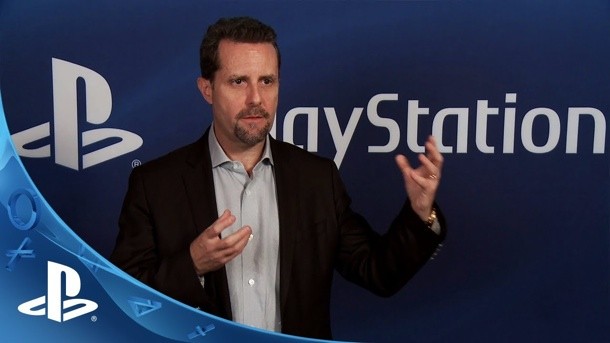Please support Game Informer. Print magazine subscriptions are less than $2 per issue
Sony’s Andrew House Expects 'Sufficient Supply' Of PlayStation 4 Through Holiday

Last week, on the eve of the PlayStation 4 launch, we had the chance to chat with Sony Computer Entertainment CEO Andrew House. during our conversation, we spoke about the shift in messaging the new hardware, the decision process of choosing release dates, and balancing developer and consumer needs.
One of the big changes that Sony has incorporated into its approach with the PlayStation 4 is supply process. “It’s really important when launching a console in a holiday season that you have a very clear statement around what the value proposition is,” House says. “For us, we returned the company to more simplicity. ‘This is a great experience. It’s priced at $399.’ That’s the message consumers are going to see in our advertising.”
Sony has wisely moved away from a two-sku launch, which also helps ensure that buyers don’t have a potentially difficult decision to make at the register. While Americans were largely unhappy with multiple launch skus, other parts of the world prefer them. “Historically, Europeans tend to gravitate more toward a greater variety of value skus,” House says.
Focusing on a single sku also has implications for supply. We asked House how Sony was positioned for this month’s rollout in 32 territories. “[This is] the first platform launch that I’ve ever been involved with where we’ve had such a good production ramp up and a good sense of supply,” he says. “I think that we will be in good supply in the countries that we’ve launched in.”
Sony is also walking the inventory tightrope, trying to make sure that there is enough product in stores for walk-ins throughout the season, but not so much that it creates a perception problem. “You try to strike a balance, particularly for us with such a strong brand in all the European countries and across the Middle East,” House explains. “We are ensuring that we have the broadest reach to ensure that people are satisfied, especially when they’ve been loyal to brand for so long. On the other hand, we’re not engendering frustration by having a shortage of supply. I think through the holiday season that we’ll be in good supply. The sales target that I announced for the company is five million units sold by the end of our fiscal year. March 31, 2014”
While the PlayStation 4 will be in 32 territories before the end of November, Japan will be waiting until next year. “When we choose launch dates, we do it with very careful consideration,” House says. “A huge factor in our determination is where we are seeing the appropriate breadth of great game experiences. There are just some basic differences in that highly networked experiences like online multiplay has taken off to a much greater degree in the US and European markets than it has in some of the Asian markets.”
The markets look for different gaming experiences, and Sony wants to be sure to roll out with an appropriate software lineup for each territory. “We paid careful attention to when we had enough confidence that we would have developed from the ground up experiences that the Japanese consumer would really respond to,” House tells us. “That was the primary decision in pushing back the launch in Japan to a slightly later time period.”
Japan won’t be without a new PlayStation product, though. The Vita TV has just launched in that market, and there is hope that it might arrive on our shores, also. House tells us he was surprised that Western media gravitated toward the device.
“The media response was kind of instant outside of Japan,” he says. “The opportunity for Vita TV in Japan is that you have to-date not seen quite the uptake in video streaming services that you’ve seen in many of the other countries. With a really good understanding of the Japanese entertainment consumer, we had the opportunity for a first-mover advantage. With a device that has a critical differentiating factor, which is great Vita games of which there are a proliferation in Japan, and combined with delivering streaming video services, we could in essence create that market.”
House also took the opportunity to further dispel one of the myths surrounding the run-up to E3 this year. “I was genuinely surprised in the whole discussion around DRM about one thing, which was the assumption or suspicion that we would try to drive the consumer down a very controlled path,” he says. “That surprised me, because it was so far from our intentions, and that’s exactly why we felt it so important to make a very clear statement of intent at E3 and beyond.”
The conversation turned to the trickiness of balancing constituencies as a platform holder. “I take what I hope is a balanced view on that, and it’s the balanced view that any platform holder needs to take,” House says. “What I mean by that is the balance between understanding very strong concerns of folks whose lifeblood is creating great content (and making sure there is recompense for that) and the other school of thought that it’s a way for the most committed consumers to enjoy a broader range of content than they would if used games did not exist.”
House identifies the value of those that regularly trade in games as having indirect impact. “I’ve seen data that the vast majority of used sales go immediately into additional purchases, that they are not somehow being extracted from the overall game economy,” he says. ”Those folks have a very strong influence. Their opinions really count, and they translate into a broader audience purchasing more games. As with many of the debates, the truth probably lies somewhere in the middle. Our approach is, therefore, to balance those two constituencies.”










